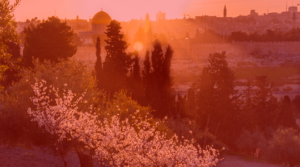In the 18th century there was a spiritual revival in central Switzerland. In just a few years, house churches were established in more than 15 political communities in the Lucerne hinterland. These meet in secret and read, discover and live the Bible. Despite massive persecution by the Catholic Church and state, a discipleship movement emerges.
Region:
Central Switzerland
Start:
18. century
House Churches
15+
converts:
700+
pioneer service
Around 1700 Jakob Künzli, a journeyman shoemaker from Emmental, came to the Lucerne hinterland, where he sold wooden shoemaker's nails. But the simple peddler also has Bibles for the Catholic farmers with him. With Augustin and Lucilla Salzmann in Wolhusen he found a "House of Peace". The farmer enjoys a good reputation as a village doctor. The many sick people who seek his help now not only receive ointments and essences, but also hear the gospel. The Salzmanns begin their first Bible study group in their large house. This is risky at a time when the state and church are prescribing the "correct" faith to the citizens. Salzmann was arrested as a "heretic" and died in Lucerne after 7 years of imprisonment.
multiplication
Salzmann's former contract boy, Jakob Schmidli, met the Anabaptists in the Emmental, the Moravian Church in Basel, Reformed pastors in Bern, Aarau and Zurich and free-church Pietists in Oberdiessbach and Schaffhausen on his wine trips for the Werthenstein monastery. With all these Christians, Schmidli experienced hospitality and, despite their different beliefs, a spiritual unity. They give him bibles and awakening books, which he smuggles to Lucerne. There, more and more people are beginning to read the Bible themselves and to meet like-minded people for church services. In this way, house churches are being formed in at least 15 villages in the Lucerne hinterland. They form a network without a hierarchical form of organization, but with leaders who are friends with each other. As a five-fold ministry (Eph 4,11:1), they work to ensure that all awakened ones grow in faith and serve one another with their spiritual gifts, as described in the New Testament (14,26Cor 1:4,10; XNUMXPt XNUMX:XNUMX).
Persecution
The Bible movement deeply terrifies ecclesiastical and secular authorities. They condemn the peaceful subjects as "nefarious emissaries of hell" who must be exterminated. 500 to 700 of the Awakened are imprisoned in the towers of Lucerne. In 1747 the largest and last heresy trial in Swiss history took place. At least 80 believers are outlawed, dispossessed, exiled or sentenced to galley service. To set an example, Schmidli, as the main suspect, was strangled and burned.
effects
The testimony of the martyrs is not in vain. The spiritual hunger of the people of Lucerne is enormous. High-ranking politicians order thousands of Bibles for them from the Basel Bible Society. Through the influence of the «2. and 3rd generation» of the revival movement, the Helvetic National Assembly decided in 1799 on freedom of belief and conscience and in 1832 the Federal Day of Thanksgiving, Penance and Prayer was introduced as a milestone of religious peace in Switzerland. In 2001, the President of the Lucerne Government Council inaugurated a commemorative plaque on the Sulzig and rehabilitated the persecuted. These now stand as a "cloud of witnesses" on the tribune of eternity (Heb 12,1:1) and fire us today's Christians mightily in the competition of faith (9,24Cor 27:1-6,12; 24Tim 5,8:XNUMX). The XNUMX elders bring their prayers before God's throne (Rev XNUMX:XNUMX) and more and more Christians are beginning to realize that hearing them is the basis for a new spiritual awakening.
Characteristics of a Spiritual Revival
- A revival begins with people who are the experience the biblical message of salvation existentiallyn and away from the let the love of God be fulfilled. (2Cor 5,17:1; 3,1Joh XNUMX:XNUMX)
- A revival is from worn by humble followers of Jesuswho want to live and die for Jesus Christ. (Eph.3,8:1,21; Phil.2,20:XNUMX; Gal.XNUMX:XNUMX)
- A revival is from accompanied by power effects, miracles and signs of the Holy Spirit, through which people experience God's healing and liberating work. (Mark 16,20:15,19; Rom XNUMX:XNUMX)
- A revival becomes possible where “church brands”, denominational thought patterns and structures are secondary and the Christians live unity in Jesus Christ in prayer and service. (John 17,21:1; 1,10Cor.1,16:XNUMXff; Col.XNUMX:XNUMX)
- A revival is one discipleship movementwhich begins in marriages and families and in which all learn to minister to one another with the fruits and gifts of the Holy Spirit. (Eph.4,16:1,10; Col.1:3,12; 1Thess.4,10:XNUMX; XNUMXPt.XNUMX:XNUMX)
- A revival leads to the New Testament church model spiritual extended family and house church . (Eph.2,19:1; 3,15Tim.1:2,5; 3,6Pt.XNUMX:XNUMX; Heb.XNUMX:XNUMX)
- A revival occurs under persecution of the followers of Jesus, who in the power of faith are a strong testimony, answering hate with love. (Mt.5,10-12; Joh.15,20; 2Tim.3,12; 1Joh.5,4)
Recommended book: From the Cross to the Crown
Beat Schmid has historically reviewed the revival movement. This resulted in a 168-page book with colored illustrations. The book “Through the Cross to the Crown” can be booked for CHF 22 (excl. shipping) via the e-mail address durchs.kreuz.zur.krone@gmail.com .




